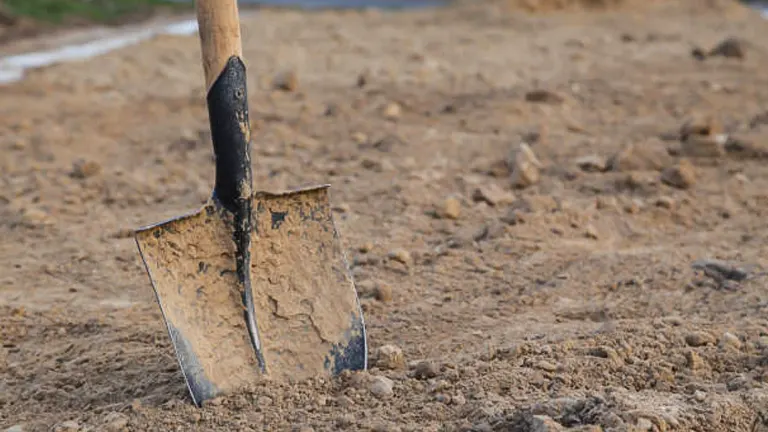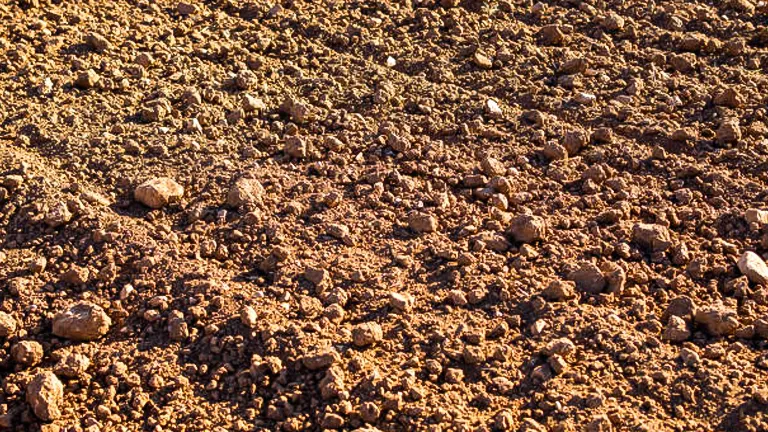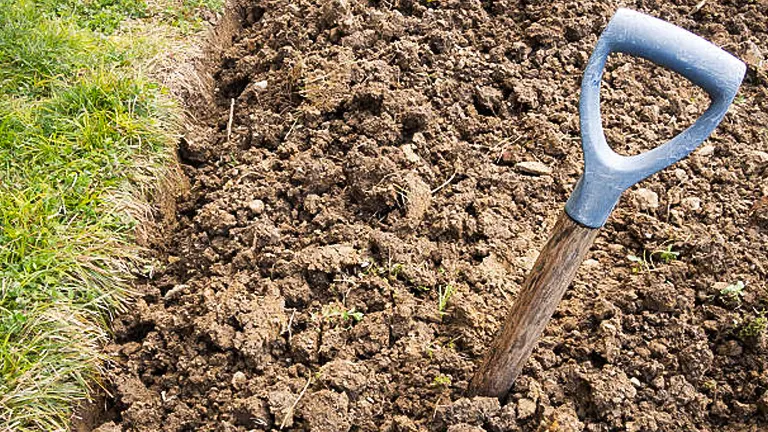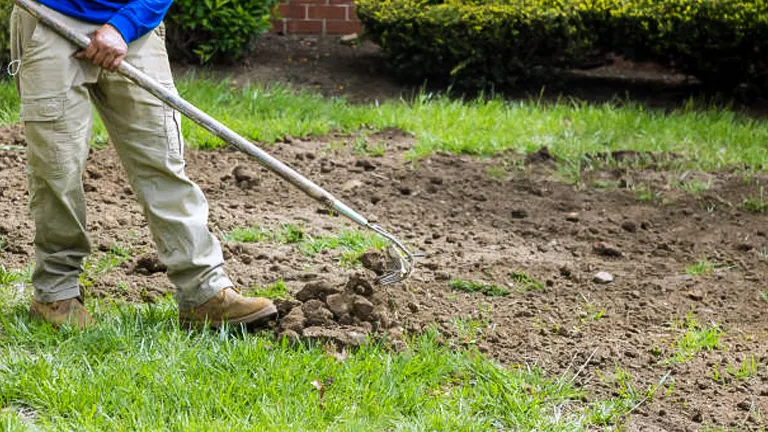How to Amend Clay Soil for a Lawn: The Ultimate Success Guide
- June 13, 2024
- 0 comment
Discover how to amend clay soil for a lawn effectively. Get expert tips to create a lush, vibrant yard that thrives in any season. Are you struggling with stubborn clay soil in your garden? Transforming this challenging soil type into a lush, thriving lawn is easier than you think.

With our expert strategies and insights, you’ll learn how to dramatically improve soil condition and promote healthy grass growth. Get ready to unlock the full potential of your lawn and create a stunning outdoor space!
Table of Contents
- Understanding Clay Soil
- Signs Your Lawn Has Clay Soil
- Essential Tools and Materials
- Step-by-Step Guide to Amending Clay Soil
- Best Practices for Maintaining Amended Clay Soil
- Troubleshooting Common Issues
- The Impact of Properly Amended Clay Soil on Lawn Health
- Additional Tips and Tricks
- Conclusion
- FAQs
Understanding Clay Soil
Characteristics of Clay Soil

Clay soil is primarily composed of very fine particles less than 0.002 mm in diameter. These minute particles lead to a dense soil matrix that can hold moisture and nutrients but also compact easily, making it less than ideal for drainage and root penetration. When wet, clay soil can expand significantly and become very sticky. Conversely, when it dries, it often contracts and hardens, which can lead to cracking. These physical changes can stress plant roots and inhibit growth.
Scientific Analysis:
- Particle Size Distribution: Over 50% of the particles in clay soil are smaller than 0.002 mm.
- Permeability: Clay has a very low permeability rate, typically less than 0.01 cm/hour, which impedes water flow.
- Plasticity: High plasticity index, often over 30%, which indicates how much the soil can deform before cracking.
Common Challenges
The compact nature of clay limits airflow and water movement, crucial for healthy plant growth. During the rainy season, its tendency to retain water can lead to waterlogging, suffocating plant roots and promoting root rot. In contrast, during dry periods, clay soil becomes extremely hard and can crack, which disrupts root growth and reduces the soil’s ability to retain and absorb water.
Benefits of Improvement
Amending clay soil can transform its properties dramatically:
- Improved Structure: By introducing organic matter such as compost or biochar, the soil’s porosity increases, enhancing both air and water flow.
- Enhanced Drainage and Aeration: This leads to better root development and decreased susceptibility to root diseases.
- Increased Nutrient Retention: Organic amendments improve the cation-exchange capacity (CEC) of clay soil, which increases its ability to hold onto essential nutrients.
Scientific Benefits Table
| Property | Unamended Clay Soil | Amended Clay Soil |
|---|---|---|
| Drainage Rate | Very Poor (0.01 cm/hour) | Improved (0.1-0.5 cm/hour) |
| Aeration | Poor | Good |
| CEC (meq/100g) | 10-15 | 20-30 |
| Porosity (%) | 20-25 | 30-40 |
| Compaction | High | Reduced |
| Plant Diversity | Low | High |
Enhancing clay soil not only increases its ability to support a wider variety of plant life but also mitigates the seasonal extremes of water retention and drought stress. This results in a more robust and resilient lawn, capable of maintaining its allure across various conditions and seasons.
Signs Your Lawn Has Clay Soil

Identifying clay soil in your lawn involves observing several distinct physical and behavioral characteristics. Here’s a detailed look at these indicators, backed by scientific metrics, to help you accurately determine if your lawn is clay-based.
Physical Characteristics:
- Texture: When wet, clay soil feels slick and sticky due to its fine particles and high plasticity. It can be molded easily with minimal force.
- Hardness: In dry conditions, clay soil becomes very hard and can form large cracks. This is due to the soil’s shrink-swell capacity, where it expands when wet and contracts when dry, sometimes leaving visible gaps on the surface.
Behavioral Characteristics:
- Water Retention: Clay soil has a high water retention capacity, leading to prolonged surface water pooling after rainfall. This can be quantified by its low infiltration rate, which is significantly slower than loam or sandy soils.
- Compaction: Due to its density, clay soil is prone to compaction, making it difficult to dig or till. This compaction can adversely affect root growth and soil aeration.
Scientific Indicators Table
| Indicator | Description | Measurement | Clay Soil Impact |
|---|---|---|---|
| Infiltration Rate | Speed at which water permeates | <0.1 inches per hour | Extremely slow, leads to pooling |
| Plasticity Index | Soil’s ability to be shaped | 15-30% | High, soil remains moldable when wet |
| Bulk Density | Mass of soil in a given volume | >1.4 g/cm³ | Higher density, less pore space |
| Cracking | Appearance of cracks in dry soil | Visible cracks | Severe, with wide and deep cracks |
| Tillage Difficulty | Effort to dig or till the soil | High resistance | Requires significant effort |
Essential Tools and Materials
Tools Needed:
- Garden Spade or Shovel: For digging and turning the soil.
- Soil Aerator: Helps to break up compacted soil and improve aeration.
- Wheelbarrow: Useful for moving amendments and soil around.
- Garden Rake: For smoothing and leveling the soil after amendments have been mixed in.
- Soil Testing Kit: To determine the existing pH and nutrient levels of your soil.
Organic Amendments:
- Compost: Adds organic matter, improving soil structure and fertility.
- Sphagnum Peat Moss: Helps in loosening the soil and improving water retention.
- Well-Rotted Manure: Introduces more nutrients and enhances microbial activity.
Inorganic Amendments:
- Gypsum: Breaks up heavy clay and improves calcium levels without altering pH.
- Sand: When used correctly with organic matter, can help to loosen the soil structure.
Step-by-Step Guide on How to Amend Clay Soil for a Lawn
Initial Preparation: Testing Your Soil
Begin by assessing the current condition of your soil to understand what amendments are needed. Conduct a soil test using a home testing kit or by sending a sample to a local extension service. This initial step will reveal your soil’s pH, nutrient levels, and texture, providing a roadmap for the specific amendments required to balance and enhance soil health.
Step 1: Aerating the Soil
Aeration is crucial to improving the overall structure of clay soil. By using either a core aerator or spike aerator, you can create holes in the lawn that facilitate better air and water flow and make it easier for organic materials to penetrate the soil. This process reduces compaction and prepares the soil for further treatment.
Step 2: Applying Organic Amendments
Next, enhance the soil’s fertility and structure by spreading organic materials such as compost, peat moss, or well-rotted manure. Distribute a layer about half an inch to three-quarters of an inch thick over the entire lawn. These organic amendments are key to enriching the soil, as they improve moisture retention, boost nutrient levels, and support beneficial microbial activity.
Step 3: Incorporating Inorganic Materials
For soils with specific deficiencies or structural problems, incorporating inorganic materials like gypsum or coarse sand might be necessary. Gypsum can help counteract high sodium levels and break up heavily compacted soil, while sand can improve drainage. Carefully mix these materials into the top several inches of soil to avoid further compaction, focusing on achieving a balanced soil composition.
Step 4: Mixing Amendments into the Soil
Thoroughly integrate the added organic and inorganic amendments by turning the soil to a depth of 8-10 inches. Using a rototiller or garden spade, ensure that the amendments are evenly distributed throughout the clay soil. This mixing is vital to ensure that the improvements to the soil structure and nutrient content are uniform, providing an optimal environment for plant roots.
Step 5: Watering Strategies Post-Amendment
After amending the soil, it’s important to help the new materials settle and start interacting with the existing soil. Lightly water the area to moisten the amendments without causing runoff or erosion. This gentle watering helps to initiate the improved soil dynamics, ensuring the amendments begin to benefit the soil structure and plant growth immediately.
Best Practices for Maintaining Amended Clay Soil

Ensuring your amended clay soil remains healthy is key to a vibrant lawn. Follow these practices to maintain an environment that fosters lush grass growth all year round.
Routine Maintenance Tips:
- Regular Aeration: Annually aerate your lawn to prevent the clay particles from re-compacting, keeping the soil structure open and breathable.
- Top-Dressing: Apply a thin layer of compost or topsoil each year to enhance soil structure and fertility gradually.
- Proper Mowing: Keep your lawn at an optimal height to promote a robust root system and reduce grass stress.
Seasonal Care Advice:
- Spring: Start the season by testing the soil’s pH and nutrient levels, adjusting with amendments to encourage vigorous growth. This is also an ideal time for reseeding or overseeding sparse areas.
- Summer: Monitor your watering closely. Aim for deep, infrequent watering that encourages roots to grow deeper, seeking moisture and nutrients.
- Fall: Aerate if needed and apply a final layer of compost to nourish the soil through the winter.
- Winter: Minimize lawn traffic to prevent soil compaction and protect grass roots during the colder months.
Troubleshooting Common Issues

Even with meticulous maintenance, certain issues may arise that can compromise the health of your lawn or garden. Effectively recognizing and addressing these issues is crucial to maintaining a thriving ecosystem. Here’s a deeper dive into the common problems associated with under-amendment and over-amendment of soil, complete with scientific insights and practical solutions.
Under-Amendment Issues:
- Poor Drainage and Compaction:
- Problem: Soil that retains water excessively or becomes hard indicates insufficient organic matter, leading to poor drainage and aeration.
- Solution: Integrate additional organic materials like biochar or well-aged compost. Biochar, for instance, can increase the soil’s porosity and reduce density, improving both water drainage and root penetration.
- Scientific Insight: Biochar can decrease soil density from an average of 1.6 g/cm³ to about 1.3 g/cm³, enhancing pore space and aeration.
- Nutrient Deficiency:
- Problem: Signs such as yellowing leaves or stunted plant growth suggest a lack of essential nutrients.
- Solution: Amending soil with composted manure or a balanced slow-release fertilizer can replenish nutrient levels. Compost provides not only nitrogen, phosphorus, and potassium but also micronutrients essential for plant health.
- Scientific Insight: Regular application of compost can increase soil nutrient content by up to 30%, particularly enhancing nitrogen availability, which is crucial for healthy plant growth.
Over-Amendment Issues:
- Excessive Moisture Retention:
- Problem: Soil that remains soggy long after watering may have an overabundance of organic matter.
- Solution: Incorporating coarse sand or perlite can improve drainage. These materials help break up dense organic layers, allowing water to filter through more effectively.
- Scientific Insight: Adding 10% perlite or sand by volume can increase drainage rate by up to 20%, preventing waterlogging.
- Altered Soil pH:
- Problem: Over-application of certain amendments like fresh manure or high-sodium fertilizers can lead to an alkaline pH.
- Solution: Applying sulfur or peat moss can acidify the soil, bringing pH back to a desirable level for most garden plants.
- Scientific Insight: Sulfur application can lower soil pH from 8.0 to a more optimal 6.5 over a season, depending on existing soil conditions and rainfall.
The Impact of Properly Amended Clay Soil on Lawn Health

Transforming clay soil through proper amendment is not just about solving immediate problems; it’s about setting the stage for long-term success. Amended clay soil offers several significant benefits that extend beyond mere aesthetics.
Enhanced Soil Structure: By integrating organic and inorganic materials, the soil becomes looser, allowing roots to penetrate more deeply and easily. This enhanced structure facilitates better drainage and aeration, preventing the waterlogging that often plagues clay-heavy areas.
Improved Nutrient Retention: Amended soil more effectively captures and retains essential nutrients, making them readily available to grass roots. This nutrient-rich environment promotes healthier, more resilient grass that can withstand pests and diseases more effectively.
Increased Biodiversity: Healthy soil supports a diverse ecosystem, including beneficial insects and microorganisms. This biodiversity is crucial for natural soil enrichment and pest control, contributing to a more robust and sustainable lawn.
Additional Tips and Tricks
Optimizing the health of your amended clay soil not only involves regular maintenance but also strategic planning and a deeper understanding of the ecosystem. Here’s how you can ensure that your garden not only survives but thrives.
Regular Monitoring of Soil Health
Keeping an eye on the condition of your soil is paramount. Conducting soil tests in early spring and again in autumn allows you to adapt your care based on the soil’s current needs. These tests reveal critical details about pH and nutrient levels, guiding you to make informed adjustments. For instance, identifying a nitrogen deficiency early can save you from stunted plant growth later in the season.
Choosing the Right Grass Species
The success of your lawn largely depends on the grass species you plant. Not all grasses have the same resilience to the dense nature of clay soil or the same water needs. Selecting a species suited to your local climate and soil conditions, like Tall fescue or Bermuda grass, can significantly reduce maintenance headaches. These species are particularly adept at thriving in clay soils, thanks to their robust root systems that penetrate deep into the ground, enhancing drought resistance and overall vigor.
Implementing Companion Planting
Companion planting is not just about enhancing your garden’s beauty; it’s a strategic move to foster a healthier garden ecosystem. By planting marigolds, which deter pests, or lavender, which attracts pollinators, alongside your grass, you enhance biodiversity and build a more resilient garden. This practice not only supports ecological health but also introduces variety, which can protect your plants from being overwhelmed by any single pest or disease.
Educating Yourself on Seasonal Care
Understanding the seasonal needs of your garden can greatly improve your ability to care for it effectively. Each season brings unique challenges and opportunities; knowing the right time to mulch for winter protection or the best watering practices during the hot summer can make a substantial difference in your garden’s health. Engaging with local gardening groups or consulting with experts can provide insights tailored to your area’s climate and conditions, ensuring your gardening efforts are as effective as possible.
Advanced Soil Management Techniques
| Strategy | Description | Frequency | Benefits |
|---|---|---|---|
| Soil Health Monitoring | Testing pH levels and nutrients | Biannually | Prevents imbalances, guides amendments |
| Selecting Grass Species | Choosing species adapted to clay soil and local climate | Initially/As needed | Reduces maintenance, enhances growth |
| Companion Planting | Integrating beneficial plants alongside grass | Seasonally | Increases biodiversity, ecological health |
| Seasonal Care Education | Learning specific care techniques for each season | Continuously | Optimizes plant health, seasonal resilience |
Related Post
- How to Build a Barn: A Step-by-Step Guide for Beginners
- How to Build a Sustainable Compost Bin: Easy and Eco-Friendly DIY
- How to Fertilize Bougainvillea: A Complete Guide for Stunning Blooms
- How to Fertilize Apple Trees: Essential Tips for a Bountiful Harvest
- How to Fertilize Lemon Trees: Secrets for Thriving Citrus
- How to Fertilize Avocado Tree: A Step-by-Step Guide for Lush Growth
- 10 Best Bow Saws to Buy in 2024: Top Picks for the Money
- Best Miter Saw For Beginners
- Top 10 Pruning Saws to Buy in 2024: Best for the Money
- 7 Best Pocket Chainsaw
Conclusion
Amending clay soil for a lawn is more than a gardening task—it’s an investment in the health and beauty of your home environment. With the strategies outlined in this guide, you can transform a challenging clay base into a thriving green landscape. Remember, the key to success lies in consistent care and a willingness to adapt practices as your lawn grows and changes. Embrace these challenges, and enjoy the rewards of a beautiful, resilient lawn.
FAQs
- What is the best time of year to start amending clay soil for a lawn?
The best time to start amending clay soil is during the early spring or fall. These seasons offer moderate weather conditions that are ideal for soil work and allow the amendments to settle before extreme temperatures set in. - Can I use regular garden soil as an amendment for clay soil?
While garden soil can be used, it’s not the most effective amendment for clay soil because it may not sufficiently alter the soil’s structure. It’s better to use organic materials like compost or sphagnum peat moss, which better enhance soil aeration and drainage. - How often should I reapply organic amendments to my clay soil lawn?
Organic amendments should generally be reapplied annually to maintain soil quality. However, the frequency can vary based on the condition of your lawn and soil tests, which can guide you on nutrient needs and soil structure. - Is it possible to over-amend clay soil, and what are the signs?
Yes, it’s possible to over-amend clay soil. Signs of over-amendment include soil becoming too loose, retaining too much water, or changes in soil pH that adversely affect lawn health. Conducting regular soil tests can help monitor conditions and prevent over-amendment. - What are the consequences of not aerating clay soil before amending?
Not aerating clay soil before amending can lead to suboptimal results. Aeration helps break up compact soil, allowing amendments to integrate more deeply and effectively, improving air, nutrient, and water distribution essential for healthy grass roots. - Can I plant immediately after amending clay soil, or should I wait?
It is advisable to wait a few weeks after amending clay soil before planting. This waiting period allows the amendments to stabilize within the soil and begin improving the soil structure, ensuring better root establishment for new plants. - How do I choose the right type of grass for my newly amended clay soil?
Select grass types based on your climate and the specific conditions of your amended clay soil. Grasses like tall fescue and Bermuda grass are often recommended for clay soils due to their deep root systems and tolerance to compact soil conditions. Consulting with a local garden center or turf professional can also provide tailored recommendations. - What is the most effective organic amendment for clay soil, and why?
Compost is often considered the most effective organic amendment for clay soil because it not only improves soil structure and aeration but also adds essential nutrients and beneficial microorganisms. Compost helps create a balanced soil ecosystem that supports healthy lawn growth.
With these expert tips and practical advice, amending clay soil for your lawn doesn’t have to be daunting. Start applying these strategies today, and watch as your lawn transforms into a lush, vibrant outdoor space that you and your family will enjoy.

Joel Cunningham
Forestry AuthorI'm Joel Cunningham, an expert in pruning and weed management with over a decade of experience. My skills are rooted in formal training and extensive practice, focusing on advanced pruning techniques and efficient weed control. I'm known for my quality work, precision, and deep understanding of plant health and soil dynamics. My contributions extend to educational initiatives where I share sustainable practices and advice, establishing myself as a reliable and authoritative figure in the gardening community.













Leave your comment